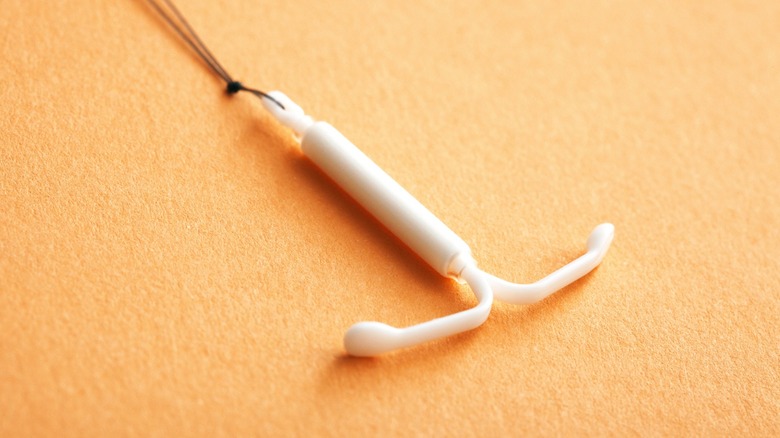The Important Thing To Know Before You Get A Birth Control IUD
Let's talk about IUDs: you know, those little T-shaped things you see in every gynecologist's office. The first IUD (intrauterine device) was introduced in the 1970s as a means to prevent pregnancy, but was often unsuccessful and inevitably did more harm than good. Thankfully, it has since been upgraded to a safer, more accurate form of birth control, and about 11.6% of American women have one, according to Vox. It's popular among women who are tired of taking a birth control pill at the same time every day (or forgetting to).
To insert the device, your OB-GYN uses an insertion device to push the IUD into your cervix until it reaches your uterus, Planned Parenthood explains. The entire procedure is very simple and takes five minutes at most. Despite that, it's important to go into it having a well-rounded knowledge of the procedure — before, during, and after. A lot of women wonder how painful it's going to be, and unfortunately, most doctors will say it feels nothing more than a slight pinch; however, we wanted to give you a proper heads-up before you get your IUD.
It hurts... a lot
Of course, every woman's pain tolerance is different, but many women are sharing their first-hand accounts of the procedure on TikTok, saying the feeling is more than the slight pinch you were promised. In some cases, women were in so much pain that they threw up or passed out. TikTok user @clairejgunn had to cancel her appointment halfway through because the pain was unbearable. Unfortunately, a majority of the women who had terrible experiences were met with little-to-no support from their doctors, being told the procedure "wasn't that bad."
One of the key pieces of information you should know before you get an IUD is the tenaculum, and how it works. A tenaculum is a tool used to pierce your cervix in order to keep it in place, Aspivix explains. What we've learned from these first-hand accounts is many doctors don't typically mention the tool, which is what causes women the most pain. One user, @janicea312, shared her frustration with the lack of information provided by her doctor before her IUD insertion, saying women learned more about the procedure through TikTok than when they spoke with their OB-GYN.
Again, not every doctor-patient relationship or visit is the same, but if you are considering getting an IUD, it wouldn't hurt to do some research on your own and verify with your doctor later. The more you know going into it, the more you can prepare for the big day.
Pain management solutions
Unfortunately, at this point in time, general anesthesia isn't available for getting an IUD inserted, but that isn't to say women aren't advocating for it. In May of 2022, a petition began in the UK, asking doctors to have the option accessible for women who want it, which currently has more than 35,000 signatures, says Chatelaine. Until then, your doctor will most likely recommend taking pain medication before the procedure and may be able to give you a local numbing anesthetic if you ask for it, per Planned Parenthood. However, some women have stated the injection made them feel worse.
You can expect a bit of spotting anywhere from three to six months after the insertion, and chances are, you'll experience some heavy cramps for a couple of days following the procedure. That said, if you can get past the pain and the side effects, an IUD is a great method for preventing pregnancy.


